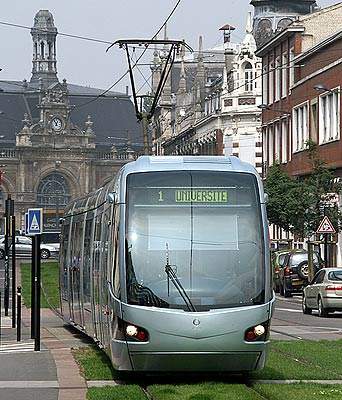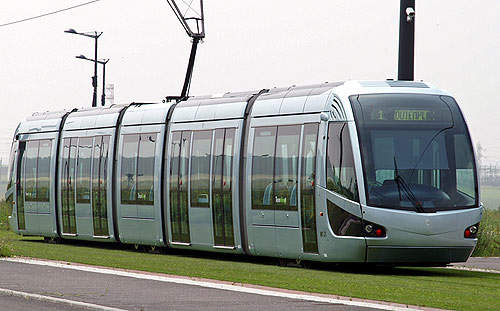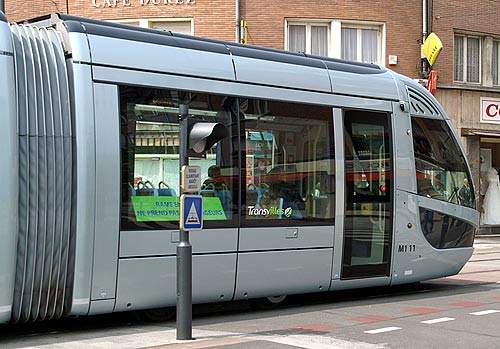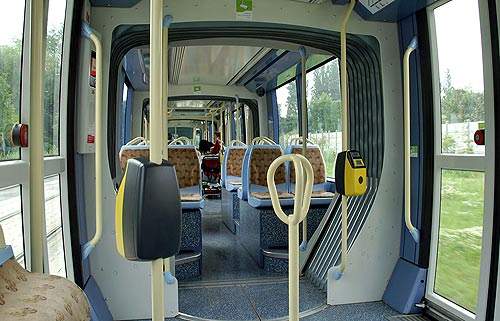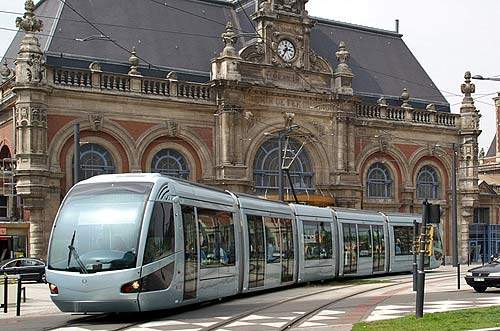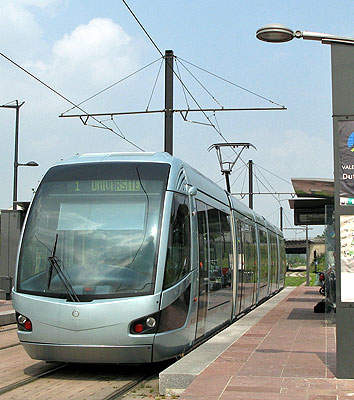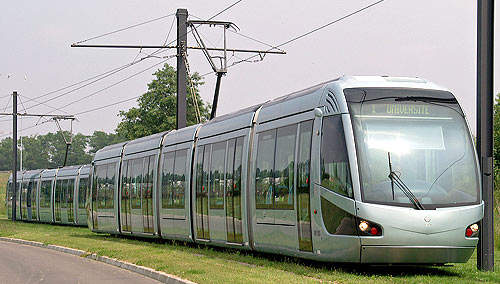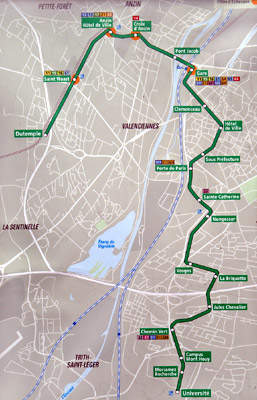One of the most notable things about the tram service in Valenciennes, France, is its setting. Most contemporary light rail developments in France are based in major cities, but this one serves a dispersed cluster of communities, which is home to approximately 390,000 people. The population of Valenciennes itself is only 42,900.
Valenciennes is part of the Nord département administrative area, adjoining the Belgian border. The region suffered from the extreme decline in the local industrial staples of mining, steel and textiles. It had an extensive tram network in the first half of the 20th century, but it closed in 1966.
Revival has in part been through the automotive industry, with major employers PSA Peugeot Citroën and Toyota both having local manufacturing plants. The latter began regional production in 2001 but quickly became an active supporter of the tram project. Bombardier Transportation and Alstom also have rail vehicle manufacturing operations in the area.
The European Railway Agency headquarters is also based in Valenciennes. Its mandate is to create a competitive European railway area through increased cross-border compatibility.
The project
Valenciennes features a number of closely spaced but self-contained settlements that evolved before the motor vehicle era. Consequently, it lacks a coherent road network and the post-industrial infrastructure has done little to encourage redevelopment.
At grass roots level, a public survey of almost 1,250 people found 83% believed a tramway was ‘an interesting proposal’, and more than two-thirds of those questioned said they would be likely to use the services.
The light rail scheme was sponsored by Syndicat Intercommunal des Transports Urbains de la Région de Valenciennes (SITURV) and its supporters included local, regional and industry interests. Phase I of the project was given the go-ahead in 2000, despite the efforts of a powerful anti-tram lobby. An Alstom-led consortium was award the contract to build the system, which opened in July 2006.
This phase cost €242.8m and the European Investment Bank was an important source of these funds.
The system is operated by French transport specialist company Transdev, under the name of Transvilles. Prior to January 2006, it operated under the name of Semurval. An 8.8km extension of Line 1, from Dutemple to Denain, was carried out in Phase II of the project. The extension connected eight stations and opened to the public in August 2007.
The Phase III construction on the second line in the Valenciennes tram network began in September 2011 and was completed in December 2013. The 15.5km-long line was opened for commercial passenger service in February 2014. The single-track line between Anzin and Vieux Condé serves 22 stations.
Infrastructure
The first phase of Line 1, a 9.5km double-track route, passes through residential, retail and industrial areas, variously using reserved tracks parallel to roads, dedicated alignments and streets restricted to only trams and pedestrians. Although it includes central Valenciennes, it does not enter the impressive city square, which is open to road traffic. The closest stop to the square is the Hôtel de Ville, which is a block away.
Like much of the evolving Valenciennes system, both of the original terminals, Dutemple and Université, are in semi-rural locations. As part of the reorganisation of road space, similar to many other modern French tramways, the dedicated alignments make extensive use of grassed areas between and around the tracks.
There are several bus interchanges along a route, including a stop at the busy SNCF railway station where passengers can connect to regional and long-distance services. The system’s purpose-built depot and control centre is near the Saint Waast stop. Five tram stops have adjoining park-and-ride sites to discourage car use within urban areas.
The first substantial addition to the system, almost doubling in length, extends south-west from the Line 1 terminus in Dutemple to the area’s next largest community, Denain. The extension uses 6.5km of pre-existing but disused mining railway, so speeds of up to 70km/h are possible, with stops for road crossings. The overall operating speed for the extension is more than 10km/h faster than the original urban section’s 20.8km/h.
Two new stations have since been added to the line: Solange Tonini in 2008 and La Plaine in July 2009. One existing station, Allende, was renamed to Jean Dulieu in September 2008. Trams run between 5.30am and 10pm.
Rolling stock
Valenciennes opted for a fleet of 21 Alstom Citadis type 302 trams, the type used in the majority of French tram systems that have opened since 2000. This model has five-sections, low-floors, double doors and plenty of rails, allowing passengers to swiftly board and disembark, even at busy stops. There is also potential for units to be increased with intermediate modules to meet additional demand. Driver cabs are air-conditioned.
Alstom delivered nine trams for the second line of Valenciennes tram network in December 2013. The trams are identical to the existing fleet running on the first line and each tram can carry up to 295 passengers.
Signalling and communications
Tickets can be bought from machines at each stop, with revenue protection inspectors present on the route. Tram stops have real-time indicators displaying service information, and visual and audio announcements of stops are made onboard. The trams are also equipped with internal video surveillance cameras for added passenger protection.
The trams have a cab signalling system, although they run on entirely reserved tracks, with warning signals at the many road intersections marked to indicate the absolute priority of trams.
The signalling and control systems are completely integrated, helping to keep down overall costs and minimising the possibility of isolated problems, bringing the entire network to a halt.

